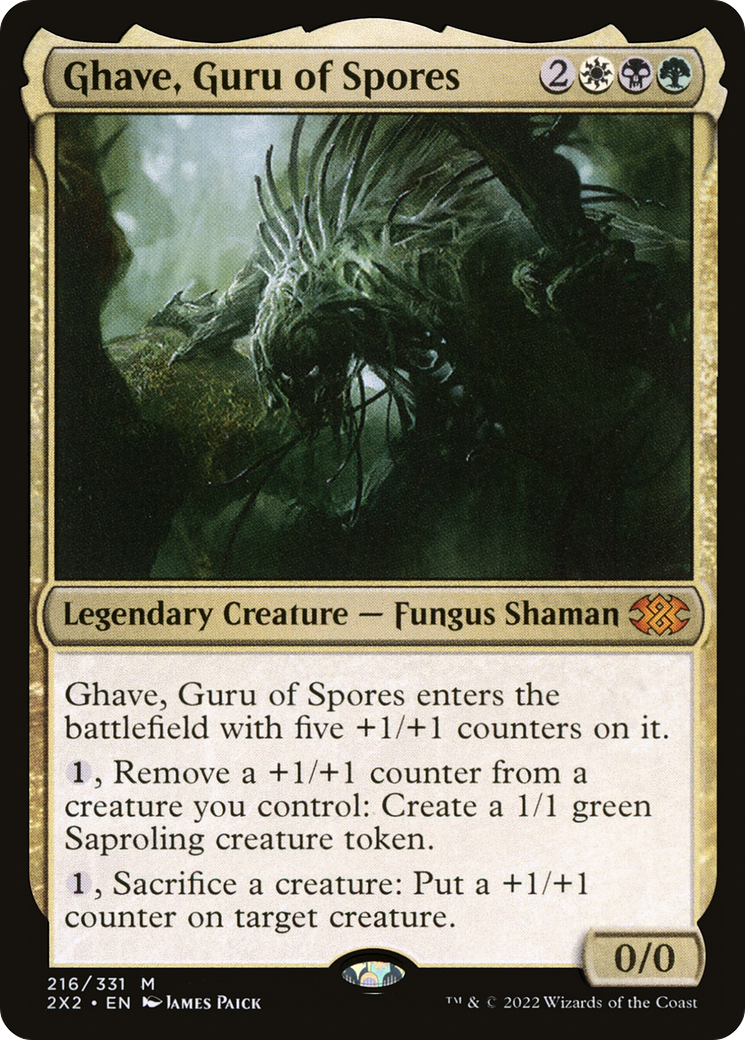Threat assessment is a much-needed skill in Commander, as it helps players identify who is in the lead, on their way to victory, trailing behind, and who stands in the way as a threat to your stance.
This is a skill that everyone thinks they are good at, but a skill any player can be better at! By correctly evaluating your opponents, you can make executive decisions about which players to
target, what resources to save or spend, and how to navigate complex game changing avenues.
I told a friend I was writing about this topic and after going over some of this, I asked him what was his take and we both agreed to what he stated: “You can never be perfect at it because you are not working with perfect information ever. You’re working with the information provided by the opponent.”
He’s right… You are playing a format where multiple people’s decisions matter and you truly hope the opponent sitting across the table can see the threat to your right that is about to close out the game. This is a game where every move counts, whether you are on the offensive, defensive, or simply trying to use targeted removal as effectively as possible.
He and I discussed: “It is very rare you will have both knowledge of cards in their hand and not have ways of manipulation at instant speed. With that in mind, your best bet is to go with your card knowledge based on available mana”
I asked him what our takeaway should be for the best removal even though the focus is on threat assessment: To which we discussed and agreed: “I prefer destroy target permanent when it comes to my single target removal but when color restrictions apply, I will have a heavy mix of creature and land removal and a small splash of artifact/enchantment removal and usually leave it to board wipes such as Farewell and Cyclonic Rift”
EVALUATING AN OPPONENT’S THREATS IN COMMANDER
Check out their board state and assess “What matters?”
-
Take a look at the creatures, artifacts, and enchantments on the board. Are there any that can turn the game around that you consider a threat to you or the other players?
-
Do they have any cards that can disrupt your strategy or prevent you from winning the game? Make a note of any cards or effects that could be a problem and keep track of any changes to the board.
Experience: I once had a friend who got really upset that they were attacked with a board full of
slivers (The good ones) and was upset that someone went after them when the player down the table had ability to go off on their next turn with infinite pinging.
In my eyes, the correct answer was removing the player who was about to go infinite and kill the table vs. one person.
ASSESSING OPPONENT’S COMMANDERS
-
Observe their commander – The commander of an opponent’s deck can be a significant factor in how they play the game. Consider their commander’s abilities and how they are likely to impact the game.
-
Does their commander have a powerful activated ability or trigger effect? Does it strategize and sync up well with the cards in their deck? Is the Commander itself a key part of their win condition?
Experience: Ghave the Guru of Spores is a key factor in how a Ghave deck works.
When playing against a Ghave deck you might ask yourself: “Do their saprolings stand in your way of winning?” Target their token duplication enchantments, such as Doubling Season or Parallel Lives with removal, and try to keep Ghave off the board by playing something like Oubliette.
I promise you that the Ghave telling you they won’t attack you if you keep their Commander AND duplication in play is generally their sneaky way of saying, “You can have second place!”
EVALUATING PLAYER THREAT LEVEL IN A MULTIPLAYER GAME
-
Take note of how many cards each player has in hand, how much mana each has available, and what other things they can do.
-
Are they likely holding any cards that could cause trouble for you or the other players?
-
Are they able to play multiple spells in a single turn?
-
Do they have any untapped mana that could be used to stop your next move?
With some of the tips laid out above… You are now at a point you may be able to theorize and strategize better now that some information you are working with at this point in the game is leaked. Even with noting the hands, their strategies/playstyles, and their multiple mana on deck, do any of the players have a wall to obscure your every move or do you shift gears into unleashing your deck’s goal? The key visuals for me are usually clear on just what they’ve been doing with the open mana … Do you think they are controlling the board, flooding the board or responding to the board, at the end of the day you want your best look out tactics to compile the action of a home run.
Experience: I play a buddy of mine weekly and he tends to use a strategy around treasures and cloning (Mirrym) dragons and pinging people as they enter with Scourge of Valkas. Generally when I see a Dragon Brood Mother, a Treasure Generator or Mirrym enter, I throw removal spells that way because I recognize it can get quickly out of hand.
Going into battle knowing how certain cards and strategies can work with other
Cards are a great recipe for success.
From experience, I also know that removing Mirrym’s Haste Enchantments such as Dragon Tempest is another way to keep the dragons from spiraling out of control too quickly.
-
Consider each player’s endgame – Think about where each player is trying to finish the game.
Are they determined on attacking the other players, strengthening up their board state, or trying to win through a specific combo or strategy? Understanding their game plan can help you predict their moves and anticipate any threat they might pose to making a big move in the game.
Experience: Sometimes it’s just about that one card combo to stop in the tracks… I can tell you during an EDH Tournament I ran out of gas for removal and my buddy ended up going infinite with Terror of the Peaks and token generation, had I had the removal I would have blown up Terror the second it entered the battlefield.
However my opponent thought sheoldred on my board was a stronger target even though next turn Sheoldred would have caused my buddy to sacrifice his Terror and thus elimite his direct route to victory. Not all threats are equal within a Commander deck, which is why it’s important to think about how each piece will inform the game going forward. We want to be particularly mindful of threats that have the capacity to “go off” and provide a direct route to a game ending combo.
NAVIGATING MULTIPLAYER POLITICS
-
Be aware of partnerships and political swaying.
In Commander, players often form alliances and make deals to achieve their goals. Be aware of any treaties or deals that have been made and how they might change the game. Consider the discussion of the group and how they might “want to be friends with others” and stall the game’s outcome.
Generally, it’s a bad place to be on the outside, looking in, on deals being made at the table. Perhaps, if two players are teaming up to get ahead, it makes sense to form an alliance with the other player being left out of the deal.
By evaluating your opponent’s board state, commander, permanents/abilities , game plan, and social queues, you can make smart decisions about how to approach the game and how to deal with potential threats. Remember that threat assessment is an ongoing process, and it’s essential to keep an eye on how the game is evolving and adjust your strategy accordingly.
In conclusion, threat assessment is a critical skill in Commander, and mastering it can greatly improve your chances of winning games. By carefully evaluating your opponents and considering all the factors that might impact the game, you can make informed decisions and navigate complex situations with confidence.
So next time you sit down to play Commander, take some time to evaluate your opponents’ various resources and make a plan of attack or combo because it just might be the key to victory.










